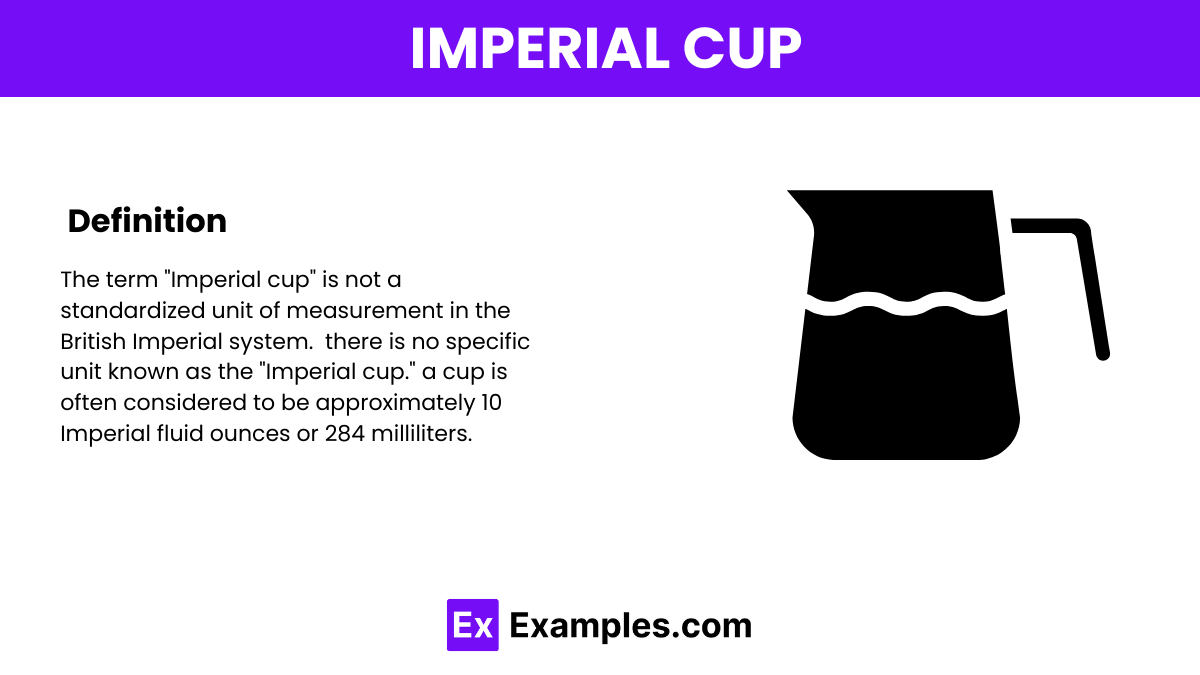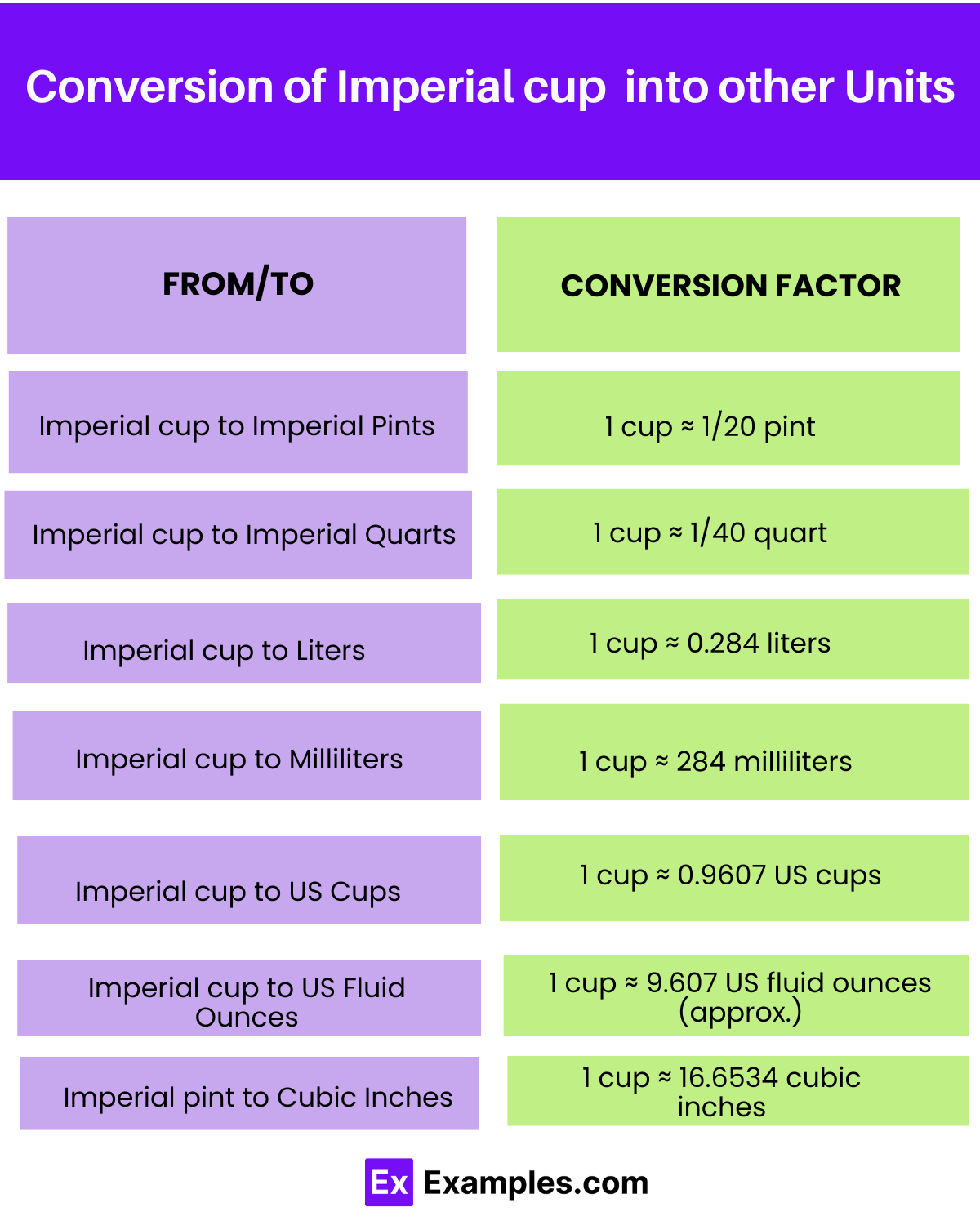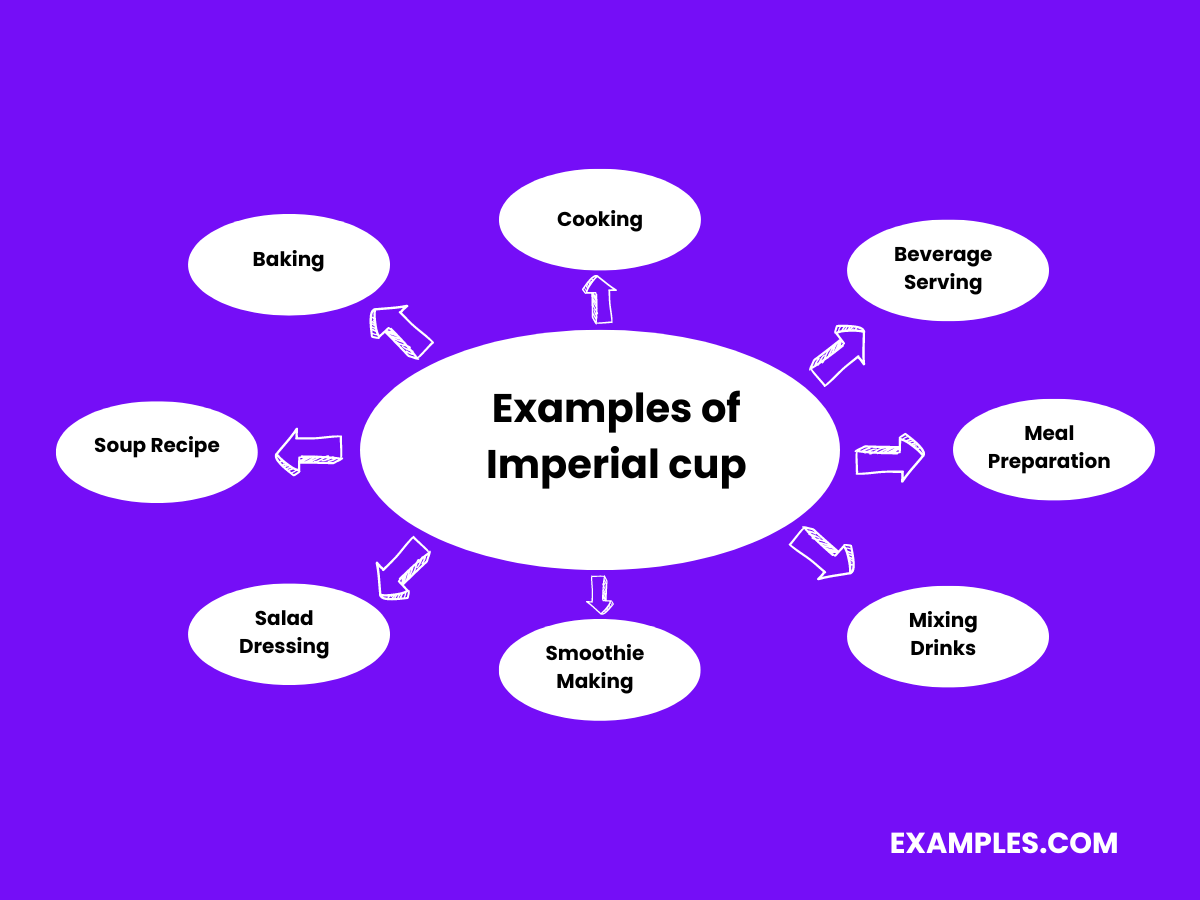How many fluid ounces are there in one imperial cup?
8
10
12
16



| From Unit | To Unit | Conversion Formula |
|---|---|---|
| Imperial Cup | Imperial Pints | 1 cup ≈ 1/20 pint |
| Imperial Cup | Imperial Quarts | 1 cup ≈ 1/40 quart |
| Imperial Cup | Liters | 1 cup ≈ 0.284 liters |
| Imperial Cup | Milliliters | 1 cup ≈ 284 milliliters |
| Imperial Cup | US Cups | 1 cup ≈ 0.9607 US cups |
| Imperial Cup | US Fluid Ounces | 1 cup ≈ 9.607 US fluid ounces (approx.) |
| Imperial Cup | Cubic Inches | 1 cup ≈ 16.6534 cubic inches |
One cup is approximately 1/20 of an Imperial pint.
A cup is roughly 1/40 of an Imperial quart.
An Imperial cup is about 0.284 liters.
It equals approximately 284 milliliters.
Converted to US cups, one Imperial cup is approximately 0.9607 cups.
It’s about 9.607 US fluid ounces (approximate).
Converted to cubic inches, one Imperial cup is approximately 16.6534 cubic inches.

Here are some examples of how the Imperial cup might be used in everyday situations:
Baking: A recipe for muffins calls for 2 cups of flour, 1 cup of sugar, and 1/2 cup of milk, where the Imperial cup is used to measure these ingredients accurately.
Cooking: A sauce recipe requires 1 cup of chicken broth, 1/2 cup of heavy cream, and 1/4 cup of white wine, with each ingredient measured using the Imperial cup.
Beverage Serving: A host prepares refreshments for a gathering, using the Imperial cup to serve individual portions of juice or punch.
Meal Preparation: A meal planner allocates servings of rice or pasta using the Imperial cup to ensure consistent portion sizes for each serving.
Mixing Drinks: A bartender measures ingredients for cocktails, such as fruit juice or simple syrup, using the Imperial cup to maintain balance and flavor.
Smoothie Making: A person prepares a nutritious smoothie with 1 cup of spinach, 1/2 cup of frozen berries, 1/4 cup of yogurt, and 1/4 cup of almond milk, measured using the Imperial cup for each ingredient.
Salad Dressing: A recipe for homemade vinaigrette calls for 1/4 cup of olive oil, 1/4 cup of balsamic vinegar, and 1/4 cup of honey, with each ingredient measured using the Imperial cup and mixed together in a jar.
Soup Recipe: A hearty vegetable soup recipe requires 2 cups of chopped carrots, 1 cup of diced celery, 1/2 cup of chopped onions, and 1/4 cup of lentils, where the Imperial cup is used to measure each ingredient for the pot.
These examples illustrate how the Imperial cup is utilized in various cooking, baking, and beverage-serving scenarios to ensure accurate measurements and consistent results.
The US Legal Cup and the Imperial cup are both units of volume measurement, but they differ in several key aspects:
These differences highlight the distinct characteristics and contexts in which the US Legal Cup and the Imperial Cup are used, despite both being units of volume measurement.
Yes, the Imperial system does use cups as a unit of volume measurement, particularly in cooking and baking, although it’s not standardized like the US cup.
Fahrenheit is neither metric nor imperial; it’s a temperature scale used primarily in the United States and a few other countries.
Text prompt
Add Tone
10 Examples of Public speaking
20 Examples of Gas lighting
How many fluid ounces are there in one imperial cup?
8
10
12
16
What is the volume of one imperial cup in milliliters?
200 ml
240 ml
250 ml
284 ml
How many imperial cups are there in one imperial pint?
1
2
3
4
If a recipe calls for 3 imperial cups of milk, how many imperial pints are needed?
1
1.5
2
2.5
Convert 5 imperial cups to imperial quarts.
1
1.25
1.5
2
How many liters are there in one imperial cup?
0.2 L
0.24 L
0.28 L
0.3 L
How many tablespoons are in one imperial cup?
10
12
16
18
Convert 2.5 imperial cups to milliliters.
700 ml
710 ml
720 ml
730 ml
How many teaspoons are in one imperial cup?
36
40
48
60
If you have 1.5 liters of water, how many imperial cups do you have?
4
5
5.3
6
Before you leave, take our quick quiz to enhance your learning!

